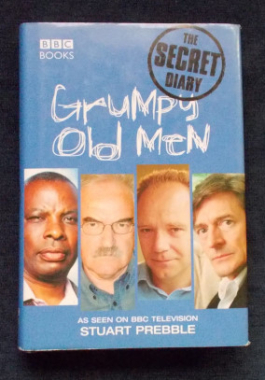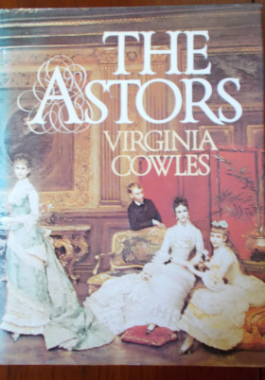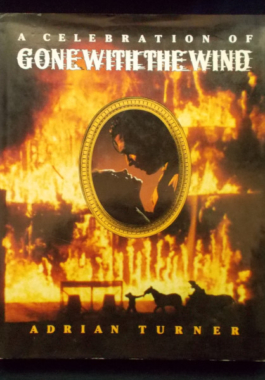The sequel to Grumpy Old Men: The Official Handbook covers a year in the sad and sordid life of a Grumpy Old Man, sorting into seasons the many irritations that multiply in this perpetual torment that we call modern living. It's a daily chronicle of life for the terminally irritable; an almanac of angst. If you know, live with, tolerate, or are a Grumpy Old Man, this is essential reading: covers drinks parties, holidays, hospital visits, buying presents for the wife, going to the gym...if you're a man of a 'certain' age, this book is for you. It proves that 'grumpy' is a way of looking at the world. Featuring Rick Wakeman, Don Warrington, Nigel Havers, Arthur Smith (of course!) and more from the Grumpy club.
- Sorry, this product is unavailable.
-

-
 Fred Hollows (1923 - 1993, AC) was no saint. He didn't pretend to be. He was as rough a diamond as they come. Author Tom Keneally called him 'the wild colonial boy of Australian surgery'. 'Every eye is an eye,' said Fred - and when 3.5 million Africans go blind each year, then the world was not up to scratch for Fred Hollows. Four out of five people who are blind don't need to be - but millions of people are blind simply because they don't have access to treatment. It was daunting, and that was no excuse for inaction or failure. Fred knew what tools were needed. Energy, money, training and a plastic lens factory. Action. So he got busy. He travelled rough roads, operated in a cave, held clinics in dry creek beds and the MiG jets overhead didn't help matters either. When chance took him to Watti Creek and he discovered how bad eye problems were among the outback Aboriginals, he got stuck in. Two years and a quarter of a million kilometres later, the Trachoma Program had fixed the worst of the problem. When Fred got busy, conflict was inevitable, some sensibilities were probably bruised, hindrances were there to overcome, waffle got dismissed and wasted time was not tolerated. But the patient - whoever and wherever he or she might have been, would see the doctor. Today, The Foundation bearing Fred Hollows' name is continuing his dream to end avoidable blindness. Illustrated with black and white photographs.
Fred Hollows (1923 - 1993, AC) was no saint. He didn't pretend to be. He was as rough a diamond as they come. Author Tom Keneally called him 'the wild colonial boy of Australian surgery'. 'Every eye is an eye,' said Fred - and when 3.5 million Africans go blind each year, then the world was not up to scratch for Fred Hollows. Four out of five people who are blind don't need to be - but millions of people are blind simply because they don't have access to treatment. It was daunting, and that was no excuse for inaction or failure. Fred knew what tools were needed. Energy, money, training and a plastic lens factory. Action. So he got busy. He travelled rough roads, operated in a cave, held clinics in dry creek beds and the MiG jets overhead didn't help matters either. When chance took him to Watti Creek and he discovered how bad eye problems were among the outback Aboriginals, he got stuck in. Two years and a quarter of a million kilometres later, the Trachoma Program had fixed the worst of the problem. When Fred got busy, conflict was inevitable, some sensibilities were probably bruised, hindrances were there to overcome, waffle got dismissed and wasted time was not tolerated. But the patient - whoever and wherever he or she might have been, would see the doctor. Today, The Foundation bearing Fred Hollows' name is continuing his dream to end avoidable blindness. Illustrated with black and white photographs. -
 1917. President Woodrow Wilson is about to lead the country into the Great War in Europe. In California, a new industry is born that will irreversibly transform America - moving pictures. Caroline Sanford, the alluring heroine of Empire Studios, discovers the power of moving pictures to manipulate reality as she vaults to screen stardom under the name of Emma Traxler. Just as Caroline must balance her two lives - West Coast movie star, East Coast newspaper publisher and senator's mistress - so too must America balance its two power centers: Hollywood & Washington. This history as only Vidal can recreate it: brimming with intrigue & scandal, peopled by the greats of the silver screen & American politics. Vidal was born into an upper class political family. Constantly surrounded by controversy, as a political commentator and essayist, Vidal's primary focus was the history and society of the United States - as a novelist, he explored the nature of corruption in public and private life.
1917. President Woodrow Wilson is about to lead the country into the Great War in Europe. In California, a new industry is born that will irreversibly transform America - moving pictures. Caroline Sanford, the alluring heroine of Empire Studios, discovers the power of moving pictures to manipulate reality as she vaults to screen stardom under the name of Emma Traxler. Just as Caroline must balance her two lives - West Coast movie star, East Coast newspaper publisher and senator's mistress - so too must America balance its two power centers: Hollywood & Washington. This history as only Vidal can recreate it: brimming with intrigue & scandal, peopled by the greats of the silver screen & American politics. Vidal was born into an upper class political family. Constantly surrounded by controversy, as a political commentator and essayist, Vidal's primary focus was the history and society of the United States - as a novelist, he explored the nature of corruption in public and private life. -

Inferno! Hal Butler
$55.00A very interesting volume of accounts of great holocausts over the last one hundred years, with accounts from survivors, eyewitnesses, reporters and emergency service workers. Chapters: The Great Chicago Fire of 1871; the destruction of a tiny lumbering village in Peshtigo with a death toll of over 1,000; the Iroquois Theatre Fire, 1903; the burning of the paddle-wheel excursion boat, the General Slocum in 1904, with over 1,000 lives lost; the 1906 San Francisco earthquake destroyed not only homes and businesses, but utility services. When fires broke out, there was no water with which to fight them; The Triangle Shirtwaist Factory disaster, New York, 1911 when 146 employees died, many of whom had tried to leap from the windows to escape the flames; In Halifax, 1917, a fire on board the SS Mont Blanc - a French cargo ship - set off its load of high explosives, killing over 2,000 and injuring 9,000 more; In 1930, a candle ignited some oily rags left on the roof of the West Block of the Ohio State Penitentiary. Many inmates burned to death in their locked cells; The Hindenberg airship disaster of 1937; The Cocoanut Grove was Boston's top night spot - on November 28, 1942, a fire began which became the deadliest nightclub fire in history and the second-deadliest single-building fire in U.S. history, claiming 492 lives; July 6, 1944, in Hartford, Connecticut, saw a fire begin under the Big Top during an afternoon performance of the Ringling Bros. and Barnum & Bailey that would kill 160+ people; The Winecoff Hotel, Atlanta, was advertised as "absolutely fireproof" - but in December 1947, a conflagration broke out that would kill 119 people; In Galveston Bay, April 1947, a fire started on board the docked French-registered vessel SS Grandcamp, detonating her cargo of about 2,300 tons of ammonium nitrate, starting a chain reaction of fires and explosions in other ships and nearby oil-storage facilities, ultimately killing at least 581 people, including all but one member of the Texas City fire department; December 1, 1958 - a fire broke out at Our Lady of the Angels School in Chicago, killing 92 students and three nuns - a tragedy which caused over 16,000 schools across the U.S. to be brought up to safety standards before one year had passed. Illustrated with black and white photographs. -

The Astors: Virginia Cowles
$18.00The Astors' immense fortune came from furs, ships and real estate. When 20 year old John Jacob Astor arrived in Baltimore from Germany in 1783, his ambition was to live comfortably from the sale of musical instruments. At his death in 1848 he was the richest man in America. He had spent his early years tramping Indian trails trading for furs and his last fourteen years quadrupling his fortune on Manhattan real estate and rentals. The family line produced politicians, social hermits, society leaders, radicals...This book covers five generations of this fascinating family and contains many family photographs and paintings. -
 Told by Stirling to Robert Raymond. Stirling Moss (OBE; 1929 - 2020) was the idol of hundreds and thousands of racing fans, a man whose uncanny skill and daring have put him amongst the greatest racing car drivers of all time. He began his career at the wheel of his father Alfred's 328 BMW, DPX 653. Moss was one of the Cooper Car Company's first customers, using winnings from competing in horse-riding events to pay the deposit on a Cooper 500 racing car in 1948 and his first major international race victory came on the eve of his 21st birthday at the wheel of a borrowed Jaguar XK120. Illustrated with black and white photographs.
Told by Stirling to Robert Raymond. Stirling Moss (OBE; 1929 - 2020) was the idol of hundreds and thousands of racing fans, a man whose uncanny skill and daring have put him amongst the greatest racing car drivers of all time. He began his career at the wheel of his father Alfred's 328 BMW, DPX 653. Moss was one of the Cooper Car Company's first customers, using winnings from competing in horse-riding events to pay the deposit on a Cooper 500 racing car in 1948 and his first major international race victory came on the eve of his 21st birthday at the wheel of a borrowed Jaguar XK120. Illustrated with black and white photographs. -


Amelia Earhart: Nevin Bell
$55.00The story of Amelia Earhart, the tall, blue eyed American girl who became the most famous woman flyer of her day. She was charming, utterly fearless and loved flying for its own sake, making two perilous solo flights across the Atlantic and the Pacific. Just before World War II, on the final leg of her round-the-world flight, she disappeared in the Pacific under mysterious circumstances which have never yet been adequately explained. With black and white and colour photographs and prints. -
 Gone With The Wind was the most commercially successful film ever made. Decades later, it still retains all the excitement, drama, glamour and romance that the world flocked to see in 1939 and 1940. This is a lavish behind the scenes look at how it was made - from David O. Selznick's inspired determination to bring it to life, the hiring and firing of script writers, directors and cameramen; the casting of Clark Gable as Rhett and the year long search for the perfect Scarlett...followed by the seemingly unending editing, the sneak previews, the sneers of Hollywood and finally, the triumphant Atlanta premiere attended by four Civil War veterans and ten Academy Awards. This is a unique pictorial record of a film that sums up the madness and the genius of the Hollywood system and a tribute to the men and women who all contributed to Gone With The Wind .
Gone With The Wind was the most commercially successful film ever made. Decades later, it still retains all the excitement, drama, glamour and romance that the world flocked to see in 1939 and 1940. This is a lavish behind the scenes look at how it was made - from David O. Selznick's inspired determination to bring it to life, the hiring and firing of script writers, directors and cameramen; the casting of Clark Gable as Rhett and the year long search for the perfect Scarlett...followed by the seemingly unending editing, the sneak previews, the sneers of Hollywood and finally, the triumphant Atlanta premiere attended by four Civil War veterans and ten Academy Awards. This is a unique pictorial record of a film that sums up the madness and the genius of the Hollywood system and a tribute to the men and women who all contributed to Gone With The Wind . -
 Subtitle: A Romance of Faith. William Quarrier (1829-1903) moved to Glasgow from Greenock with his mother following the death of his father. His reflection on his childhood: When a little boy, I stood in the High Street of Glasgow, barefoot, bareheaded, cold and hungry, having tasted no food for a day and a half, and, as I gazed at each passer-by, wondering why they did not help such as I, a thought passed through my mind that I would not do as they when I would get the means to help others. AT 17 he was working as a shoemaker having served his apprenticeship and became a devout Christian. In 1871 he opened a night refuge for homeless children in Renfrew Street, Glasgow. In 1876, starting with charitable donations, he began to build cottages on a piece of land in what is now Inverclyde for homeless children. By the 1890s there were thirty five cottages in what was now called 'Quarrier's Village', housing over 1500 orphaned and bereft children. Each cottage had a 'mother' and 'father'; each child was taught self-reliance and life and trade skills and educated at the village school. Originally known as the Orphaned Children Homes of Scotland, this foundation became known as Quarrier and is still functioning at the original village. Early black and white photographs and numerous fine sketches.
Subtitle: A Romance of Faith. William Quarrier (1829-1903) moved to Glasgow from Greenock with his mother following the death of his father. His reflection on his childhood: When a little boy, I stood in the High Street of Glasgow, barefoot, bareheaded, cold and hungry, having tasted no food for a day and a half, and, as I gazed at each passer-by, wondering why they did not help such as I, a thought passed through my mind that I would not do as they when I would get the means to help others. AT 17 he was working as a shoemaker having served his apprenticeship and became a devout Christian. In 1871 he opened a night refuge for homeless children in Renfrew Street, Glasgow. In 1876, starting with charitable donations, he began to build cottages on a piece of land in what is now Inverclyde for homeless children. By the 1890s there were thirty five cottages in what was now called 'Quarrier's Village', housing over 1500 orphaned and bereft children. Each cottage had a 'mother' and 'father'; each child was taught self-reliance and life and trade skills and educated at the village school. Originally known as the Orphaned Children Homes of Scotland, this foundation became known as Quarrier and is still functioning at the original village. Early black and white photographs and numerous fine sketches.


